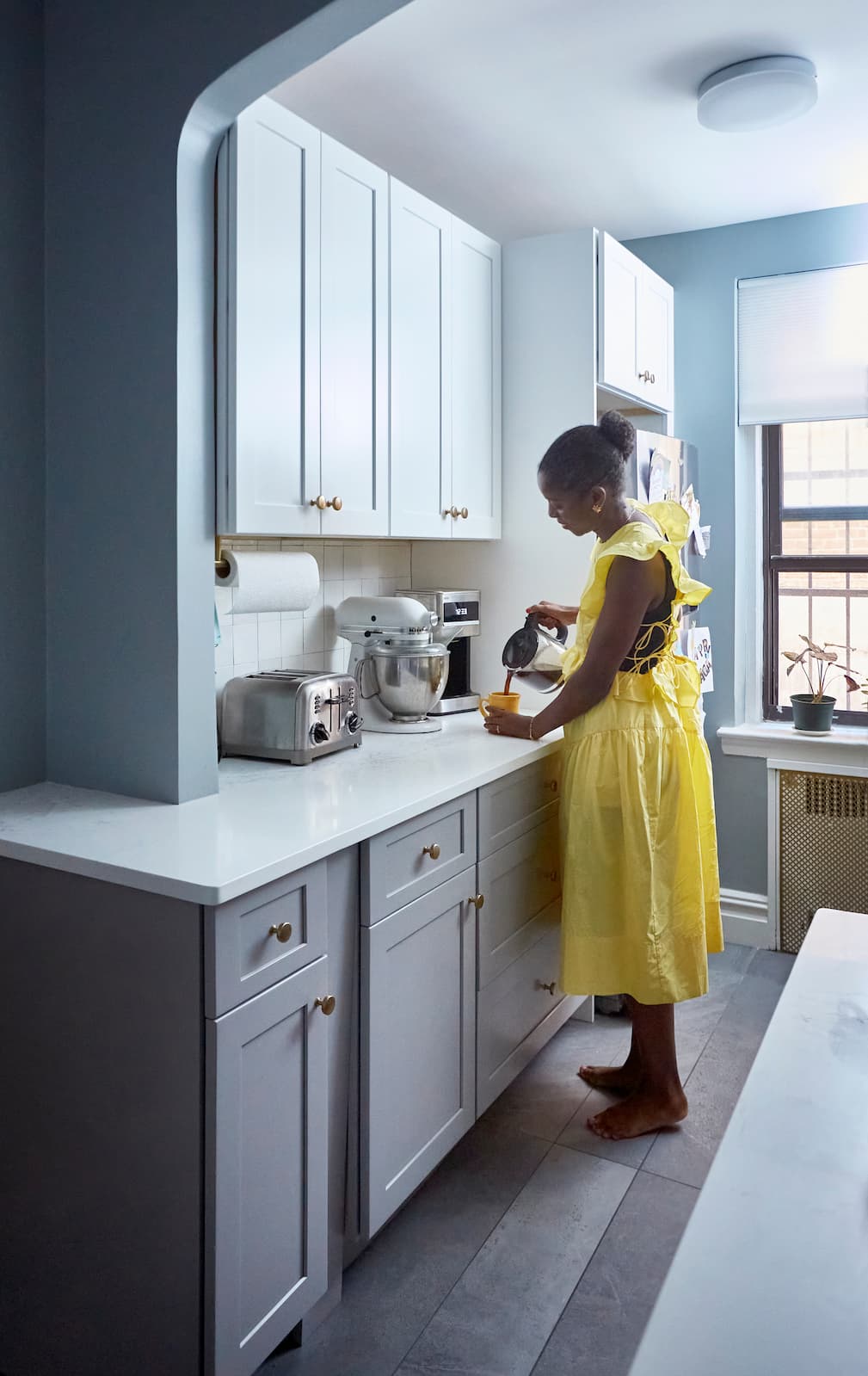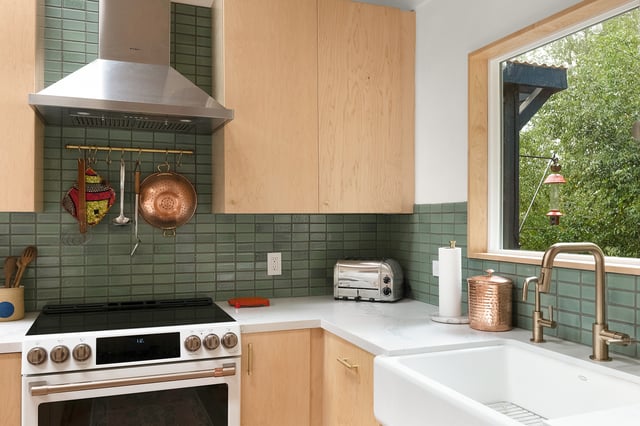
Finance
With Lower Interest Rates, Is Now a Good Time to Renovate?
09.18.2025


In This Article
Adding space to your home is a meaningful investment that can shape how you live every day. Whether you’re planning a larger kitchen for family meals, a suite for aging parents, or simply more room to exhale, the right addition makes your home work better for the life you’re living now.
This guide breaks down what additions really cost, the best ways to finance them, and how to decide which option fits your situation. From home equity loans to construction loans, we’ll cover the pros, cons, and trade‑offs so you can move forward with clarity and confidence.
Start with the basics: size and location. The square footage you’re adding and the city you live in will shape your budget more than anything else. On average, additions tend to fall into these ranges per square foot:
Keep a 10–15% contingency in reserve. After all, old framing, utility upgrades, or permitting surprises can surface once work begins.
This type of addition could be a modest bedroom, expanding a bath, or building a sunroom. Nationally, these projects often land between $25,000 and $120,000 depending on structure, utilities, and finishes. Even at this scale, tie‑ins to electrical, plumbing, and HVAC can add meaningful cost—sometimes more than the framing itself.
This is the zone for a primary suite without heavy structural changes, a larger family room, or a combined kitchen expansion. Budgets commonly range from $60,000 to $240,000+. Here, materials really matter: cabinetry, windows, tile, and fixtures can swing totals by tens of thousands.
Multi‑room expansions, a new primary suite with bath and closet, or a partial second story often run from $120,000 to $700,000+. Structure drives the spend—engineering, rooflines, foundation work, and exterior cladding add complexity. The more seamlessly the new footprint ties into the old, the more disciplined your scoping and scheduling need to be.
For more insights into budgeting your home addition, read our Home Addition Costs Guide, as well as guides like:
A home equity loan works like a second mortgage: you borrow a set amount, get it all at once, and pay it back in fixed monthly installments. The amount you can borrow depends on how much equity you’ve built in your home. Because it’s a lump sum, it’s a good match for projects with a clear budget and timeline—your contractor knows when payments are coming, and you know exactly what you’ll owe each month. The rate is fixed, so your payment never changes, which makes it easier to plan your cash flow during and after construction.
Ideal home addition financing for: Homeowners with strong equity and a well‑defined scope who prefer stable payments over time.
Steer clear if: you don’t have much equity built up, or if your home addition budget is still shifting and you need flexibility. Because your home is used as collateral, it can also feel risky if your income is uncertain or already stretched. And for smaller home addition projects, the closing costs and paperwork may outweigh the benefits, making simpler financing options a better choice.
A Home Equity Line of Credit is a revolving line secured by your property, usually with a variable rate. You draw what you need during the draw period and repay over time. For staged construction, this lets you borrow in step with actual invoices. Payments can change as rates move, so budget with some cushion.
Ideal home addition financing for: Homeowners with adequate equity who want flexible, draw‑as‑you‑go funding aligned to contractor milestones.
Steer clear if: you need the certainty of fixed, predictable payments. Because most HELOCs come with variable interest rates, your monthly payment can rise if rates go up—and even small increases can add up over the life of a project. Moreover, because your property is used as equity, this home addition financing option is risky for individuals not confident they can consistently make payments.
Cash‑out refinancing replaces your current mortgage with a larger one and pays you the difference. You end up with one loan, one rate, one payment. If today’s rates beat your existing mortgage, you may lower your overall cost—just account for closing costs on the full balance and a likely reset of your mortgage term.
Ideal home addition financing for: Homeowners with strong equity pursuing a large, well‑defined addition who want a single‑payment structure. It is also a strong financing choice for people who value simple bookkeeping.
Steer clear if: your current rate is materially lower than market or you’re close to paying off your mortgage.
A construction loan funds the build in stages after inspections. Many are interest‑only during construction and then convert to a standard mortgage. Because lenders can underwrite to the “as‑completed” value, qualifying may be possible even when current equity is thin.
Ideal home addition financing for: larger or complex additions where staged funding and as‑completed valuation improve approval and cash flow.
Steer clear if: your project is small, straightforward, or you want swift financing approval for your home addition.
FHA 203(k) combines a purchase or refinance with renovation funds into a single FHA‑insured mortgage. For additions and other structural work, the Standard 203(k) applies. Funds are drawn in stages, with a HUD consultant helping define scope and review progress. Credit and down payment requirements are generally more flexible than conventional loans, within county loan limits.
Ideal home addition financing for: homeowners who benefit from more flexible qualification and are planning structural additions within FHA limits.
Steer clear if: you qualify for conventional financing at lower total cost or your scope exceeds FHA caps.
An unsecured personal loan offers a fixed rate and fixed payment without tying the debt to your home. Approval depends on income, credit, and existing debts, and funding can be fast. It’s a practical option for smaller scopes, finishing work, or bridging a short funding gap.
Ideal home addition financing for: smaller scopes, finish upgrades, or short‑term gaps when speed matters and equity is limited.
Steer clear if: you need a large amount at the lowest possible rate or prefer a longer repayment horizon.
Before you apply for any home addition financing option, pressure‑test your monthly budget, timeline, and comfort with risk. A bit of prep—cleaning up credit, organizing documents, and modeling cash flow—can improve approvals and make the build phase calmer.
Your score drives both approval and pricing. Review your reports 60–90 days before applying so you can dispute errors and pay down revolving balances. Even a small bump can unlock a better rate tier on larger loans. If you can, pause new credit inquiries and keep credit card utilization under 30% until you close.
DTI tells lenders how much room you have for another payment. Many mortgage guidelines favor ratios at or below 43%, and lower is stronger. If your number is high, look at paying down smaller loans, consolidating high‑rate debt, or choosing a product that allows interest‑only payments during construction. Model the new payment plus temporary living costs to make sure it all fits.
Not all square footage returns value equally. Bedrooms and bathrooms often carry more resale weight than specialty spaces. Review recent local sales and talk to an agent about buyer demand in your area.
If you plan to stay five years or more, give lifestyle gains real weight—comfort and function are part of the return, and time helps the financial payback.
Construction has its own rhythm: deposits, progress payments, and the occasional surprise. Keep a project contingency of 10–15% of the contract and a separate emergency fund equal to at least 6 months of essential living expenses. For larger or more complex additions, aim for 9–12 months—breathing room that lets you handle delays without stress‑spending on high‑cost credit.
Expect shifts after you add space. Property taxes can rise, premiums can change, and utilities may climb. Keep receipts and loan records; a tax professional can advise on potential interest deductions tied to home improvements. Fold these ongoing costs into your monthly plan now, not later.
The smoothest builds start with clarity: a scoped plan, a realistic budget, and alignment with your contractor. Block helps you compare bids side by side, get expert scope reviews that flag gaps early, and use progress‑based payments that tie money to visible milestones.
Explore layouts and materials, see tailored cost estimates, and understand how each choice affects your budget—all in one place. Save your design, revisit options, and walk into contractor conversations prepared.
Plan now and hire when it’s time to build
Financing a home addition doesn’t have to feel overwhelming. Once you understand the true costs, the range of loan options, and how each one fits your financial picture, the path forward becomes much clearer. With the right plan—and the right partner—you can create the space your life needs today, while protecting your financial health for tomorrow.

Written by Block Renovation

Renovate confidently with Block
Easily compare quotes from top quality contractors, and get peace of mind with warranty & price protections.
Thousands of homeowners have renovated with Block

4.5 Stars (100+)

4.7 Stars (100+)

4.5 Stars (75+)

Finance
With Lower Interest Rates, Is Now a Good Time to Renovate?
09.18.2025

Finance
Smart Ways to Finance a Home Addition
09.18.2025

Finance
What’s the Best Way to Pay for Home Renovations: Savings or Financing?
05.23.2025

Finance
The Top Renovations That Increase Home Value in 2025
05.22.2025

Cost
How Much Does it Cost to Renovate a Studio Apartment?
05.16.2025
Renovate confidently